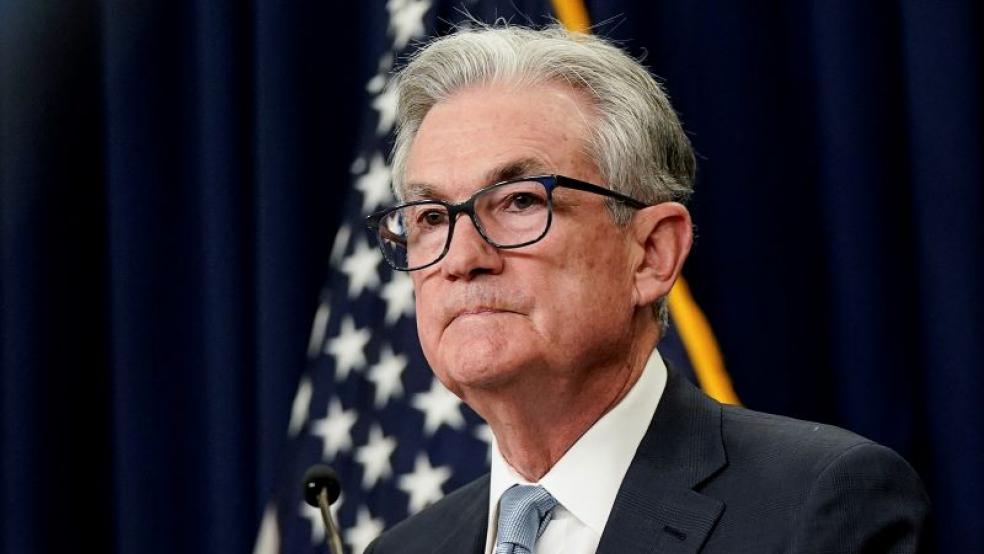Federal Reserve Chair Jay Powell made it clear Friday that the central bank’s battle against inflation is not over and warned that additional interest rate hikes could be on the horizon, if conditions warrant.
“Although inflation has moved down from its peak—a welcome development—it remains too high,” he said in remarks delivered at the annual Fed meeting in Jackson Hole, Wyoming. “We are prepared to raise rates further if appropriate, and intend to hold policy at a restrictive level until we are confident that inflation is moving sustainably down toward our objective.”
While the economy has slowed, Powell said Fed officials “are attentive to signs that the economy may not be cooling as expected.” Growth this year has been higher than expected, with consumer spending remaining robust and housing showing signs of picking up. “Additional evidence of persistently above-trend growth could put further progress on inflation at risk and could warrant further tightening of monetary policy,” Powell said.
Not for the first time – and perhaps in response to recent calls from some economists for the Fed to tolerate higher inflation levels, at least for a while – Powell reiterated the Fed’s goal: “Two percent is and will remain our inflation target,” he said. “We are committed to achieving and sustaining a stance of monetary policy that is sufficiently restrictive to bring inflation down to that level over time.” And lest any doubters suspect that Fed officials were going wobbly in their war on inflation, Powell added a note of resolution: “We will keep at it until the job is done.”
What the experts are saying: Powell’s remarks were generally seen as hawkish. Despite the “very good news” of declining inflation, the Fed chief reminded everyone that food and energy prices are volatile, and short-term readings can be misleading. “The lower monthly readings for core inflation in June and July were welcome, but two months of good data are only the beginning of what it will take to build confidence that inflation is moving down sustainably toward our goal,” Powell said.
Diane Swonk, chief economist at KPMG, said Powell appears to be leaning toward further tightening. “He is still very concerned how rapid the economy is growing because that does actually mean, all else equal, we need higher interest rates just to be restrictive,” Swonk said, per the Associated Press.
Joseph Brusuelas, chief economist at RSM, said “Powell pushed back on expectations that the Fed is ready to declare victory on its inflation fight, despite broad hints from the central bank it will pause in its rate hike campaign at its September meeting.” Instead of affirming those hints, “Powell chose to double down on the ‘last mile’ of its inflation fight and reaffirm its commitment to its 2 percent target,” Brusuelas said.
Rubeela Farooqi, chief U.S. economist at High Frequency Economics, said Powell’s comments raise the prospects of another rate hike – or maybe even two. “Overall, the message remains that the Fed has delivered a lot,” she told Bloomberg. “But inflation — even as it has abated — remains too high. And now policymakers are aware of the risks related to resilience in economic activity and are prepared to do more, if needed. Another rate hike, perhaps even two, cannot be ruled out although the decision ultimately will depend on the totality of incoming data.”
Still, not all economists think more rate hikes are necessarily in the cards, given Powell’s reliance on whatever the latest data is telling him. If inflation continues its downward trajectory, the Fed may leave rates where they are. “I think this does pave the way for a pause at the September meeting, and leaves their options open after,” Laura Rosner-Warburton, senior economist at MacroPolicy Perspectives, told The New York Times. “We’re close to the top, we may be there, and they’re going to move carefully.”
The Fed’s benchmark rate currently sits at a range of 5.25% to 5.50%, a 22-year high. The Federal Open Market Committee will consider whether to change the rate at its next meeting on September 19-20.



